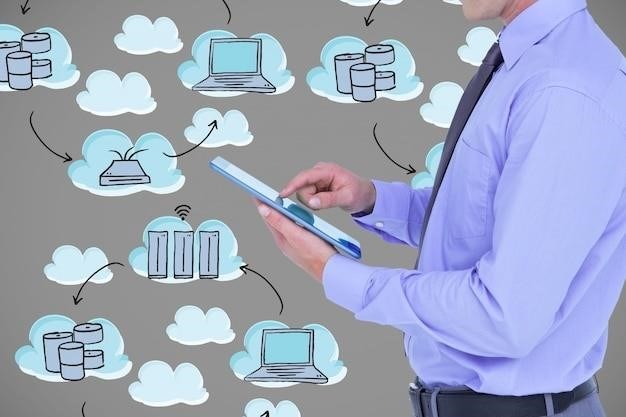
How can monitoring and analysis, automation, and scaling drive optimization of cloud resources, ensuring efficient allocation and cost-effectiveness for your business needs?
Cost Optimization⁚ How Can Cloud Expenses Be Effectively Managed?
In today’s dynamic cloud environment, how can organizations effectively manage and optimize their cloud expenses? Are there tools available to monitor spending, compare expected versus actual costs, and generate custom reports for informed decision-making? Can leveraging historical data help set informed spending limits and enhance budget accuracy? What role does optimization play in minimizing cloud waste and maximizing ROI? How can we identify and eliminate underutilized resources or idle instances? Should we consider reserved instances or spot pricing to lower costs? Can automation help streamline cost management processes and reduce manual effort? How can we ensure cost transparency and accountability across different cloud services and departments? How does choosing the right cloud cost management tool contribute to achieving significant cost savings and improving overall cloud financial management?
Scaling and Automation⁚ What Strategies Ensure Efficient Resource Allocation in a Dynamic Environment?
In a rapidly changing environment, how can scaling and automation ensure efficient resource allocation in the cloud? What strategies can be employed to dynamically adjust resources based on real-time demand, ensuring optimal performance and minimizing costs? Can automation tools help streamline provisioning, deployment, and management of cloud resources? How can we automate scaling decisions based on predefined thresholds or predictive analytics? What role do containerization and orchestration platforms like Kubernetes play in automating scaling and resource management? How can we ensure seamless scaling across different cloud services and regions? What security considerations should be addressed when automating scaling processes? How can we effectively monitor and manage automated scaling operations to prevent unexpected costs or performance issues? What best practices should organizations adopt to achieve efficient and cost-effective resource allocation through scaling and automation in a dynamic cloud environment?
Monitoring and Analysis⁚ What Tools and Techniques Provide Comprehensive Insights into Cloud Performance?
Which monitoring and analysis tools offer comprehensive insights into cloud performance? How can these tools help identify performance bottlenecks, optimize resource utilization, and enhance application availability? What metrics are crucial for evaluating cloud performance, such as latency, throughput, error rates, and resource consumption? How can real-time monitoring and alerting mechanisms enable proactive identification and resolution of performance issues? What techniques can be used to analyze historical performance data and predict future resource needs? How can we leverage machine learning and AI for automated analysis and anomaly detection? What role do log management and analysis tools play in understanding application behavior and troubleshooting performance problems? How can we integrate monitoring and analysis tools with other cloud management platforms to gain a holistic view of our cloud environment? What security considerations should be taken into account when implementing monitoring and analysis solutions? How can we ensure data privacy and compliance while collecting and analyzing performance data? Which best practices can organizations adopt to effectively leverage monitoring and analysis for optimized cloud performance and resource management?
Tool Selection⁚ Which Cloud Management Platforms Best Align with Specific Organizational Needs?
Which cloud management platforms (CMPs) best align with specific organizational needs for resource optimization, automation, and scaling? How can we evaluate CMP features like cost management, performance monitoring, security management, and compliance reporting? What factors should be considered when choosing between different deployment models, such as SaaS, on-premises, or hybrid? How can we assess the integration capabilities of a CMP with existing IT infrastructure and other cloud services? What are the key performance indicators (KPIs) to measure the effectiveness of a CMP in managing cloud resources? How can we ensure the scalability of a CMP to accommodate future growth and changing business requirements? What are the security considerations when selecting a CMP, including access control, data encryption, and vulnerability management? What level of support and training is provided by the CMP vendor, and how can we leverage it effectively? What is the total cost of ownership (TCO) of a CMP, including licensing fees, implementation costs, and ongoing maintenance? How can we compare different CMPs based on their features, pricing, and vendor reputation? What best practices should organizations follow for successful CMP implementation and ongoing management?
Q⁚ What are the key benefits of cloud resource management? How does effective cloud resource management contribute to cost optimization, improved performance, and enhanced security? What are the potential risks of not implementing proper cloud resource management practices?
Q⁚ How can cloud monitoring and analysis tools help optimize resource utilization? Which metrics are most important to track for performance optimization and cost control? How can we leverage monitoring data to identify and address performance bottlenecks and security vulnerabilities? What are the best practices for implementing a comprehensive cloud monitoring strategy?
Q⁚ What role does automation play in cloud resource management? How can we automate tasks such as provisioning, scaling, and security patching to improve efficiency and reduce manual effort? What are the different automation tools and techniques available for cloud resource management? How can we ensure the reliability and security of automated processes?
Q⁚ How can organizations effectively scale their cloud resources to meet changing demands? What are the different scaling options available, such as vertical scaling, horizontal scaling, and auto-scaling? How can we choose the right scaling strategy for different workloads and applications? What are the cost implications of different scaling approaches?
Q⁚ What are the best practices for securing cloud resources? How can we implement access control, data encryption, and other security measures to protect sensitive data and applications in the cloud? What are the key security considerations for different cloud deployment models, such as public cloud, private cloud, and hybrid cloud? How can we ensure compliance with relevant security regulations and standards?
Q⁚ How can organizations choose the right cloud management tools? What are the different types of cloud management tools available, such as CMPs, cloud monitoring tools, and automation tools? How can we evaluate different tools based on their features, pricing, and vendor reputation? What are the key factors to consider when selecting cloud management tools for specific organizational needs?
FAQ
Q⁚ How can organizations effectively manage cloud costs? What strategies can be implemented to optimize cloud spending and avoid unnecessary expenses? How can we leverage cost management tools to gain visibility into cloud usage and identify areas for cost savings? What are the best practices for budgeting and forecasting cloud costs?
Q⁚ What are the key challenges of cloud resource management? How can organizations overcome common challenges such as security concerns, complexity, and lack of expertise? What are the best practices for addressing these challenges and ensuring successful cloud adoption?
Q⁚ How can monitoring and analysis be used to improve cloud performance? Which key performance indicators (KPIs) should be monitored to assess the health and efficiency of cloud resources? How can we use monitoring data to identify performance bottlenecks and optimize application performance? What are the best practices for setting up alerts and notifications for critical performance issues?
Q⁚ What are the benefits of automating cloud resource management tasks? How can automation help reduce manual effort, improve efficiency, and minimize human error? What types of tasks are best suited for automation in the cloud environment? How can we ensure that automated processes are secure and reliable?
Q⁚ How can we effectively scale cloud resources to meet fluctuating demands? What are the different scaling strategies available, and how do we choose the right one for our specific needs? How can we automate the scaling process to ensure that resources are automatically adjusted based on demand? What are the cost implications of different scaling approaches?
Q⁚ What security measures should be implemented to protect cloud resources? How can we secure data, applications, and infrastructure in the cloud environment? What are the best practices for access control, data encryption, and vulnerability management? How can we ensure compliance with industry regulations and security standards?
Q⁚ How can organizations select the right cloud management platform? What features and functionalities should be considered when evaluating different platforms? How can we choose a platform that aligns with our specific business needs and budget? What are the key criteria for evaluating the vendor’s reputation and support capabilities?







